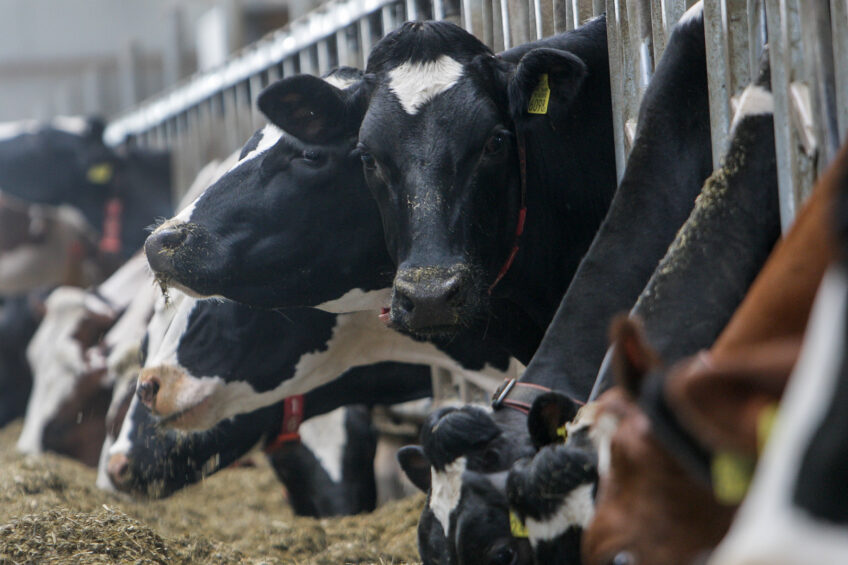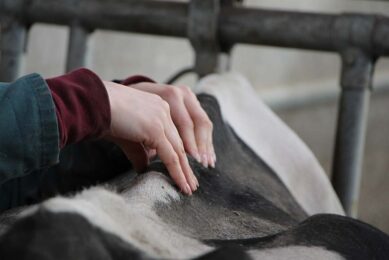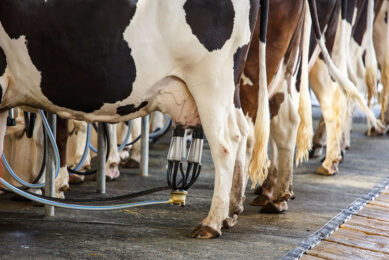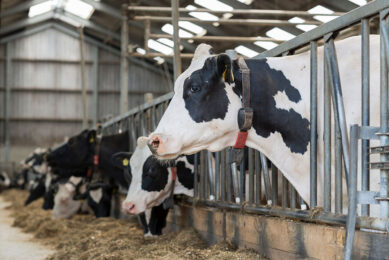Dairy nutrition and milk efficiency

The rumen is the most influential site of digestion and microbial fermentation provides much of the energy needed to maintain body condition, pregnancy and lactation. Therefore, the goals of feeding should be to maintain the rumen environment and supply sufficient nutrients to the rumen microbes. This is particularly crucial given the drive for, not only optimal milk production but optimal production efficiency.
In terms of diet, energy is often the primary driver for milk yield and producers have looked to various types of ingredients, such as fats and starch, as well as some by-pass products, to deliver more energy through the diet. Whilst the basic rules of feeding apply, there are ingredients available that can facilitate good rumen function. Dietary inclusion of live yeast can rapidly promote an anaerobic environment helping desirable, fibre-digesting microbes to proliferate and efficiently colonise feed particles, resulting in lower rumen lactate concentrations, higher overall pH and a reduced risk of acidosis. Yea-Sacc is a proprietary strain of the live yeast Saccharomyces cerevisiae with specific rumen activity and is supported by a plethora of controlled animal performance. Yea-Sacc works by metabolising excess oxygen entering the rumen present via feed particles, helping to create an anaerobic environment, which inhibits the growth of undesirable micro-organisms that contribute to acidosis and subsequent ketosis. As a result, beneficial bacteria to multiply and colonise feed particles efficiently and without competition. One consistent measurable with the addition of Yea-Sacc is an improvement in feed conversion efficiency (FCE) defined as the kg of milk produced for every kg of dry matter intake (DMI). 3 European trials each demonstrated increased milk yields with dietary additional of Yea-Sacc (Figure 1). In all trials, FCE was increased (by 6.6%, 6.3% and 5.1% for Germany, Estonia and Ireland, respectively).
Managing protein efficiency
Rumen bacteria have varying requirements for protein sources. The fibre digesters have an almost exclusive requirement for soluble nitrogen i.e. ammonia. Traditionally, dairy diets result in periods of excess followed by periods of deficiency of rumen ammonia. This is particularly evident when the diet is supplemented with urea. Using feed ingredients that are designed to satisfy the nitrogen requirements of ~95% of rumen microbes without taking up lots of ‘space’ in the diet, such as those comprising Alltech’s Protein Programme (Optigen® and Rumagen®), is one solution to the problem. The Protein Programme products can be reformulated into dairy cow rations to result in increased bacterial growth and microbial protein supply to the animal. Additionally, the resultant ‘space’ in the diet can be filled with more rumen friendly materials, such as home-grown forages. This additional space can also aid in allowing more energy into the diet. In some cases, dietary crude protein levels can also be decreased, reducing the risk of nutrient wastage. When vegetable protein sources were partially replaced by Optigen with an increase in the level of forage in UK diets, both microbial nitrogen output (non-significant) and fibre digestibility increased (Table 1).
Practical evidence of increased efficiency can be seen in the manure where animals fed Rumagen consistently excrete fewer undigested particles (Figure 2).
Figure 2 – Effect of Rumagen reformulation into dairy cow diets on manure screens. On top (A) you see the manure of the control animals; underneath (B) are the animal’s droppings when fed Rumagen

Reducing environmental impact helps to improve efficiency
Farmers are constantly reminded by government, consumers and the media, of the ever increasing focus on producing high quality products with lower levels of harmful environmental emissions. The numerous innovations implemented over the past 50 years have already helped dairy farmers to reduce their environmental impact by doing more with less. The key drivers for a reduced milk carbon footprint at the farm gate can be split into 3 main areas:
- milk yield,
- feeding system and
- the proportion of the production cycle for which a dairy cow is unproductive.
An area farmers can immediately action is the feed and feeding system. By selecting feed ingredients with a lower GWP value, for example more locally produced rather than imported feed ingredients, farmers can significantly reduce the overall global warming potential of the diet (Table 2).
Conclusions
The combination of the most progressive feeding strategies combined with implementation of farm best management practices has shown to be the most effective way to increase production efficiency. Dietary ingredients, such as Yea-Sacc and Alltech’s Protein Programme solutions, can be included as part of the strategy to increase overall production efficiency via improving rumen function and health.
References: Sinclair et al. (2008) Proceedings of the BSAS Annual Conference, York. p224
Join 13,000+ subscribers
Subscribe to our newsletter to stay updated about all the need-to-know content in the dairy sector, two times a week.










